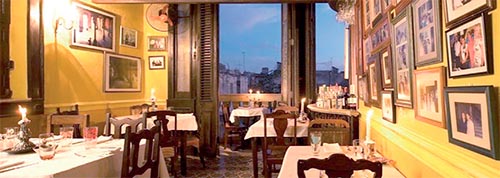
Cuba took another step in the updating of its economic model by authorizing the sale of housing, following an easing of regulations in other areas.
 A decree-law and several government resolutions, in place as of Nov. 10, comply with guidelines approved during the 6th Congress of the Communist Party of Cuba in April 2011 , focused on analyzing the country's current situation and prospects for development.
A decree-law and several government resolutions, in place as of Nov. 10, comply with guidelines approved during the 6th Congress of the Communist Party of Cuba in April 2011 , focused on analyzing the country's current situation and prospects for development.
The new regulations enable Cubans who reside in the country and foreign permanent residents to buy and sell real estate, eliminating previous restrictions. They also make it easier to transfer ownership through methods such as the permuta" (swapping) and donations, which authorities hope will help to resolve housing problems.
Previously, also in compliance with the aforementioned Party guidelines, regulations were approved to ease private work or self-employment", the buying and selling of vehicles, and the distribution of idle state land to individuals and cooperatives, among other actions. All of these actions are based on the need to change everything that needs to be changed, as Cuban President Raúl Castro has said, in calling for eliminating what he described as excessive prohibitions.
 As a result, the number of licensed self-employed workers now exceeds 338,000, having grown by more than 180,000 in one year. 65% of those workers were not employed when they applied for their licenses, mostly for providing transport (54,000) and selling food (51,000).
As a result, the number of licensed self-employed workers now exceeds 338,000, having grown by more than 180,000 in one year. 65% of those workers were not employed when they applied for their licenses, mostly for providing transport (54,000) and selling food (51,000).
Since a 2008 decree-law approving the distribution of idle state land, 1,313,396 hectares had been distributed and 79.2% of that land is now being farmed, according to official reports. 25% of those new landholders were not employed, and 13% were retirees, while one-third are young people, 18 to 35 years old.
To help boost the private sector, prices for farm tools and supplies were cut and 122 million pesos in hard currency (equivalent to dollars) was allocated to ensure that the newly self-employed are provisioned through retail sales of air conditioning units, ovens, fryers, grills and other appliances and supplies.
 In terms of vehicle sales, the new regulations ended a ban on selling autos made after 1959. Also to stimulate the private sector, the government lowered the initial monthly tax rates and provided exemptions in some cases.
In terms of vehicle sales, the new regulations ended a ban on selling autos made after 1959. Also to stimulate the private sector, the government lowered the initial monthly tax rates and provided exemptions in some cases.
Without sensationalism ndash; without haste, but without pause", as President Raúl Castro has said, the process of updating the Cuban economic model continues, maintaining as its axis a planned economy with a social orientation.
Cuba reported a 1.9 increase in its gross domestic product in the first semester of 2011 and hopes to end the year with 2.9% growth, while foreign trade grew by 27% as of the third quarter.